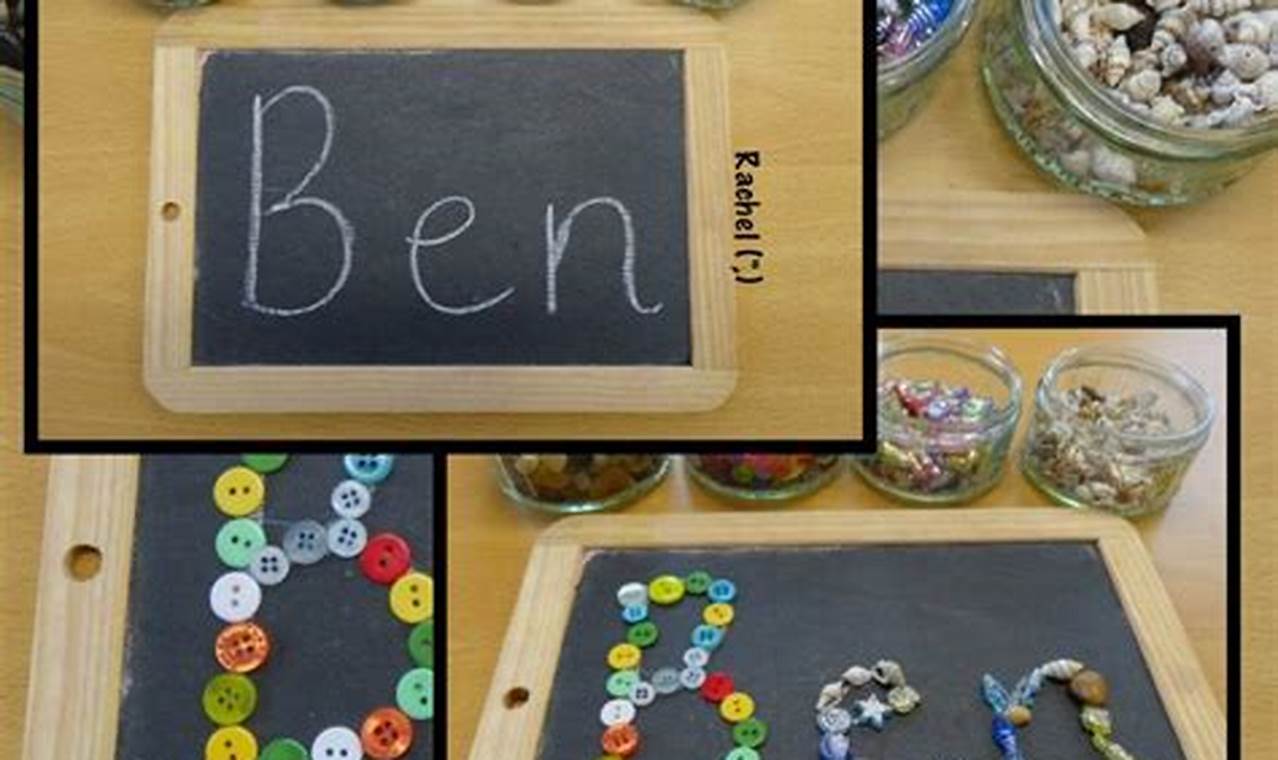Introducing name tracing activities using loose parts offers a playful and engaging method for children to develop pre-writing skills. This hands-on approach transforms the often-daunting task of learning to write into a multisensory adventure. By integrating tactile exploration with letter formation, this type of activity cultivates a solid foundation for future handwriting proficiency and enhances early literacy experiences.
The key learning benefits of engaging in name tracing activities with loose parts extend beyond basic letter formation. This method enhances fine motor skills as children manipulate and arrange small objects. It boosts letter recognition and encourages a deeper understanding of how letters combine to form their own name. This activity promotes creativity and problem-solving as children explore different arrangements and materials, fostering critical thinking skills. These combined benefits contribute to a more well-rounded and enjoyable learning experience.
This activity involves creating name templates or using pre-printed worksheets where a child’s name is clearly outlined. The central element involves the use of loose parts small, easily handled objects such as buttons, beads, pebbles, pasta shapes, or small toys. The child then uses these loose parts to carefully trace the outline of each letter in their name. The activity can be structured with guiding lines or boxes to support proper letter placement, ensuring a focused and organized learning experience.
To effectively utilize name tracing activities with loose parts, begin by creating a calm and inviting learning environment. First, clearly present the name template or worksheet to the child. Next, introduce the variety of loose parts available for tracing. Demonstrate how to carefully place the loose parts along the lines of each letter. Encourage the child to take their time, focusing on accuracy and neatness. Adults can provide support by gently guiding the child’s hand or offering verbal encouragement, ensuring a positive and engaging learning experience.
To further reinforce these skills, consider integrating related activities. Explore other worksheets from Kidtraces.com that focus on letter recognition and fine motor skills. Engage in sensory bin activities where children can search for letters hidden within materials like rice or sand. Incorporate storytelling activities that emphasize the sounds and shapes of letters. Regular, varied practice will solidify these essential skills and make learning enjoyable.
In summary, name tracing activities with loose parts offer a fun, engaging, and effective way for children to develop vital pre-writing skills. The multisensory approach enhances fine motor skills, letter recognition, and creativity, laying a strong foundation for future academic success. Explore more free worksheets on Kidtraces.com to further support continuous learning and skill development.
